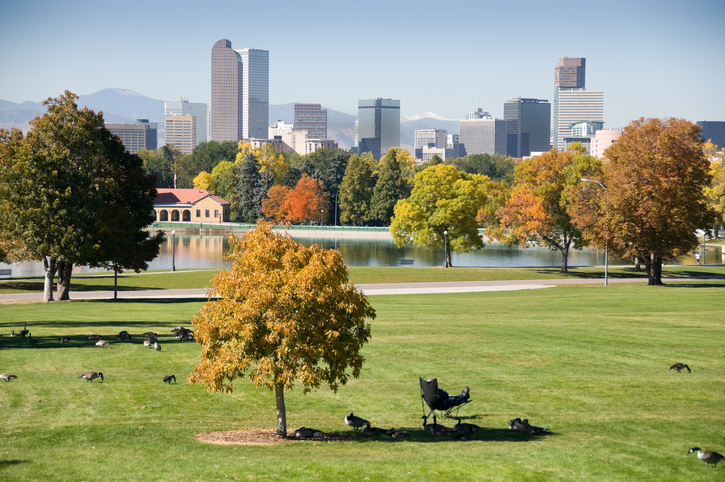Planting a tree will positively impact the world around you, and with careful planning, a new tree will likely outlive its owner. By carefully following a few steps, you can successfully plant a tree on your property that will benefit the health of your family and community for years to come. While mature trees can handle extreme temperatures, newly planted trees require mild weather so they can establish a strong root structure. Let’s look at the best season to plant a tree in Denver so it can grow and thrive year-round.
Plant in the Spring and Fall
Denver winters are cold, and temperatures can fluctuate greatly from October through April. Small trees don’t handle cold snaps well, and a sudden drop in temperature can kill a freshly planted tree quickly. That’s why experts agree that it’s best to plant trees in the spring. Spring temperatures remain mild and sunny, and this allows trees to get established in their new environment before winter hits. Fall is also a great time to plant trees, as the he weather is still warm enough for a tree to establish a solid root structure, so it can withstand the chilly winter weather over the following months.
Other Planting Tips
Planting a tree isn’t difficult, but it’s very important to do it correctly. In fact, Clemson University notes that nearly 50% of newly planted trees die within the first year, simply because the homeowner didn’t follow a few precautions. By considering a few steps, you’ll be able to plant a tree that grows and becomes a beautiful asset to your property.
Location
Trees need plenty of space to grow and expand. This includes above the ground and below. Check to make sure there aren’t power lines or other structures nearby, and make sure you aren’t planting too close to your home’s foundation or other underground barriers. Your tree’s nursery tag will list its 10-year growth height, but it’s best to assume your tree will continue to expand even larger as it continues to grow.
Additionally, you’ll want to consider:
- Drainage: Make sure water won’t pool around the tree’s base, causing it to drown.
- Sun Exposure: Trees thrive in east-facing environments with a slight breeze, but depending on the type, many can handle harsher environments.
Hole Size
Many homeowners make the mistake of digging a hole that isn’t the right size for their tree. When planting a new tree, it’s important to dig a hole that’s two to three times the diameter and no deeper than its root ball. If you plant the root ball too deep, the tree will drown. Make sure the top of the root ball is slightly above ground level when it’s planted, and the flare should be about one inch above the ground when planting is complete.
Watering Cycle
Correctly watering a freshly planted tree will determine whether it lives or dies. New trees need to be deeply watered so the roots can stretch and grow. Make sure you water slowly across the entire critical root zone. This includes the area from the tree’s trunk to the edges of its dripline. Consistently provide moisture to the ground so that a depth of 12 inches receives water.
More than anything, consistency is key. Over and under-watered trees can become weak, and that leaves them vulnerable to disease and infestation. To help with consistency, you can add a layer of mulch around the tree’s base. The mulch helps to lock in moisture, aiding in root absorption.
Pruning and Fertilizing
Trees shouldn’t be pruned within the first year unless they have broken branches that need to be removed. Don’t prune your newly planted tree until it’s had time to establish a good root system over a few years.
Additionally, it’s not usually necessary to fertilize a freshly planted tree. Save these steps for when your tree is a little hardier and has had a chance to settle into its new location.
Don’t be intimidated by the idea of planting a new tree. By following a few steps, it’s very easy, and the benefits a tree provides are endless. If you’ve got questions, or if you’d like help planting a tree in Denver, our experts at AAC would be happy to assist you. Contact us for more information.

